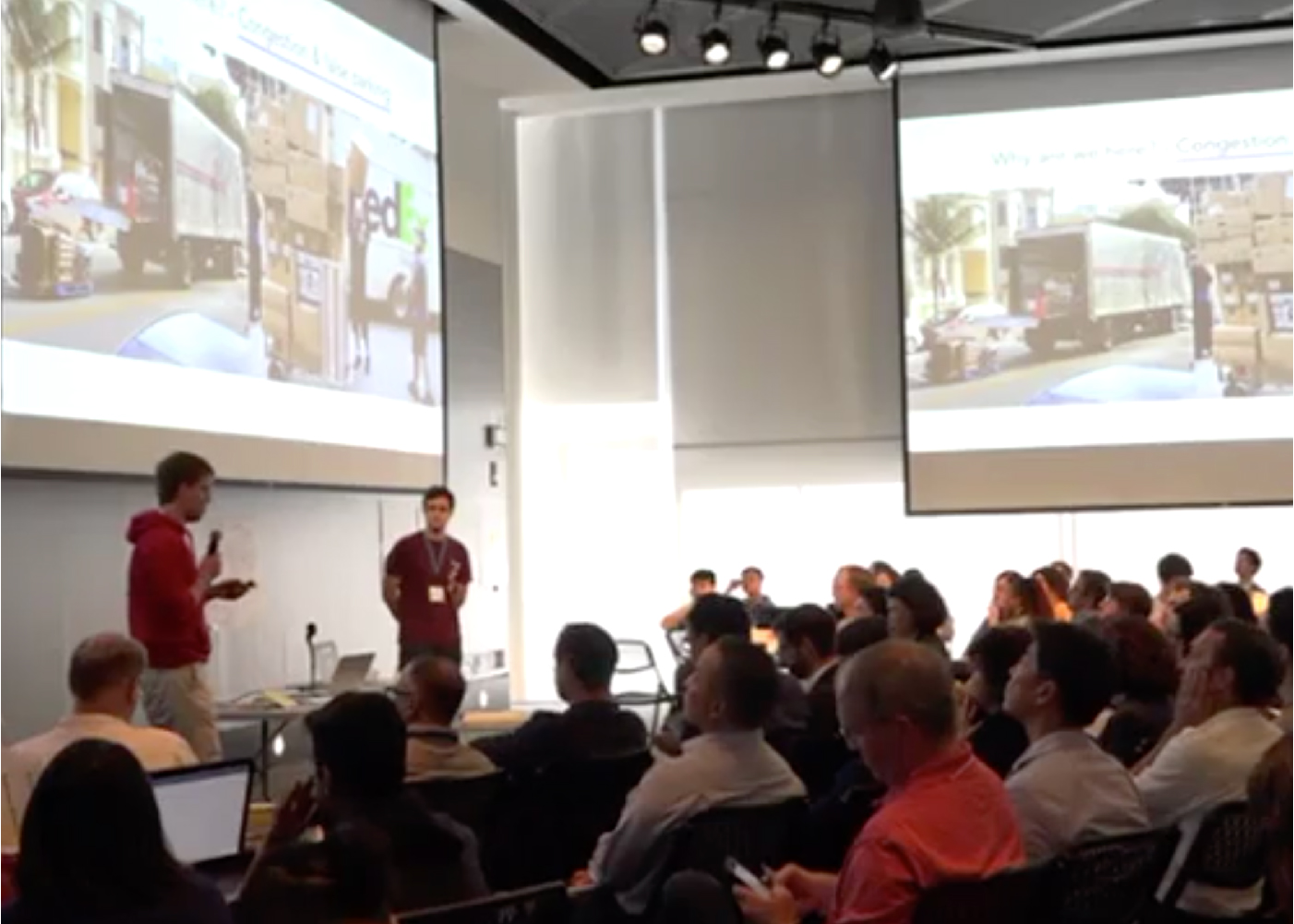Last mile deliveries are riddled with problems like flexibility & security.
Popular solutions like lockers or drones either add more vans to an already congested
traffic system, or ask for massive changes in government rules & regulations in order to be
implemented.
With more & more packages being delivered all over the world every single day, the
picture of the near future looks rather bleak due to increased traffic & lack of clear
regulations.
Our team of six was part of a three-day design hackathon at MIT Media Labs in September 2018. The
team was diverse- with people from 4 different countries and varied disciplines of engineering,
design, and urban planning.
We were one of the six winning teams at this design hackathon.
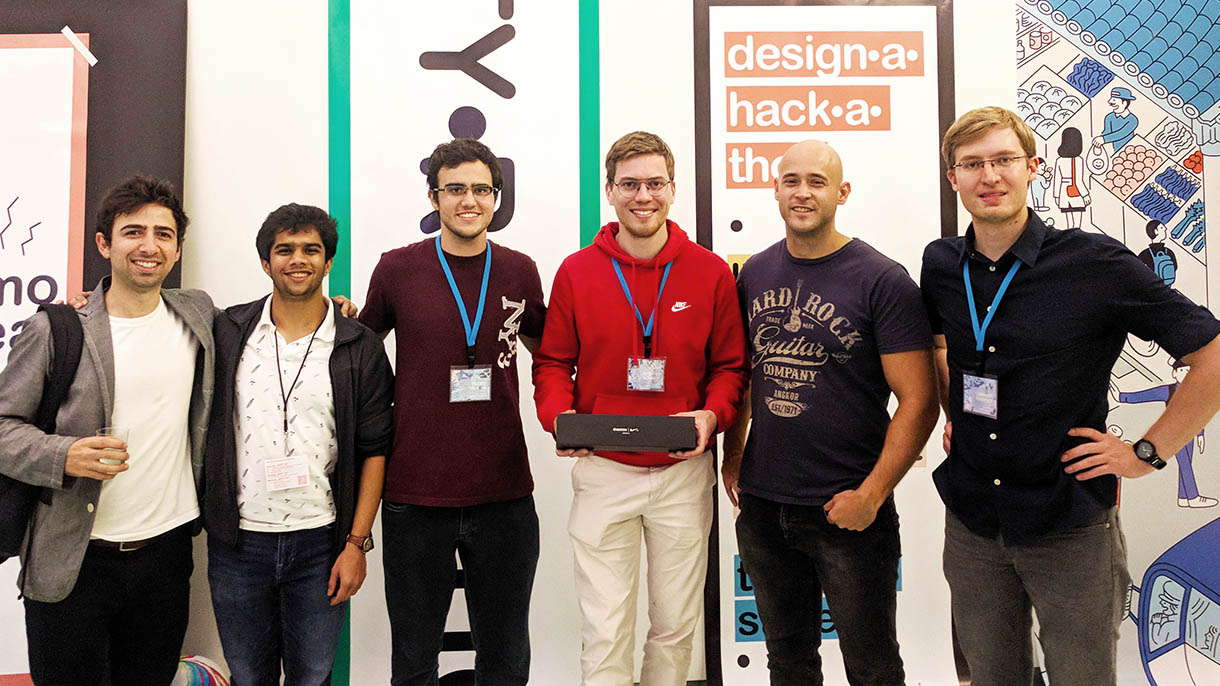
The SmartBox Team- (L to R) Benjamin, me, Pedro, Steffen, Daniel, and Lennart

'Design.a.hack.a.thon' by MIT Media Lab with UC San Diego Design Lab
I facilitated our team's design processes, which was a little different from the traditional double
diamond.
Most of my teammates were expert engineers, and did
not have prior experience with the design process. We needed a way of working which was as effective
as the double diamond, while being comfortable for engineers or people with a more solution oriented
mindset to follow the first time round.
The process we came up with (over multiple iterations, of course!) extended the linear
solution driven method with
design research, and a bit of speculation about upcoming problems in the larger system of things.

The process we came up with
The first step was learning as much as we could about how cities are tackling traffic congestions, current package delivery systems, and upcoming solutions which are trying to solve problems in the same space.

Leanna Garfield. 2018. 13 cities that are starting to ban cars, Business Insider.
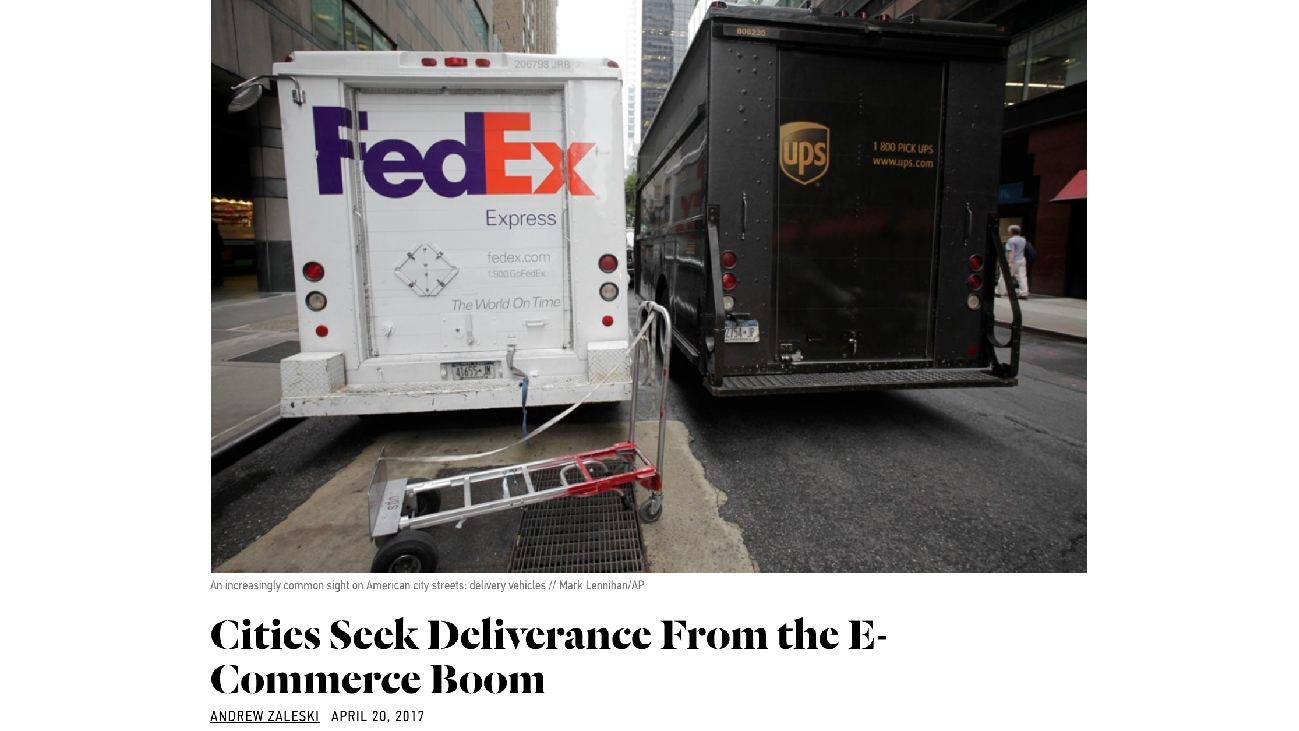
Andrew Zaleski. 2017. Cities Seek Deliverance From the E-Commmerce Boom, CityLab.

Packages strewn in MIT dorms
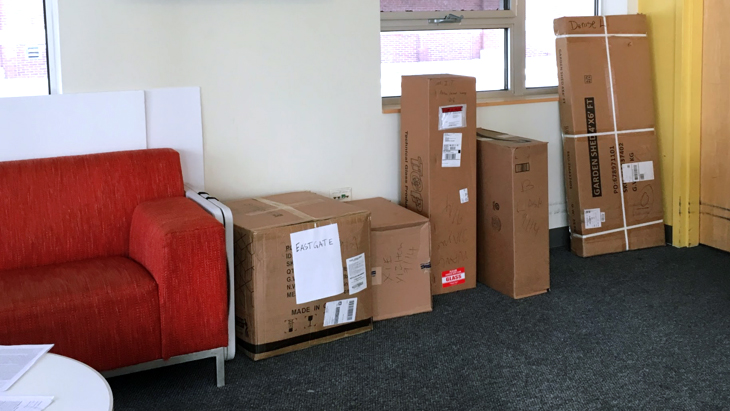
After talking with other participants and discussing amongst ourselves, drones came up to be the most
popular word on everyone’s mind. The roadblocks which we found drones suffer from are battery
problems, that powerful batteries are heavier and need more power to lift, which limits the distance
to which drones can travel.
How might we reduce the distance that drones have to travel in order to reach their
destination?
What if drones could hop on and off public transit vehicles?

Drones hitchhiking on buses and trains
The solution was compatible with two future states- cities banning private cars from city centers
and wanting to increase public transit usage, and with the fact that drones provided flexible
deliveries.
Did that solve the problem?
Not really, it raised more questions than it answered.
Will governments allow drones in urban areas in the near future?
This system was problematic since it was unlikely that the FAA will permit companies to deliver
packages via drones in the near future due to citizens' concerns regarding privacy and security.
Moreover, failure rates of common drone parts like bearings make it dangerous for drones with
packages to fly over populated areas.
How might we provide the same flexibility and convenience which drones would have provided
without using drones?
Replacing drones with people, and creating a gig economy based service for package deliveries was
the identified as the next best step.
This new system could also potentially help build communities,
especially during holidays and festivals, when an exponential increase in online orders could pave
the way for people to meet their neighbors and wish them good health.
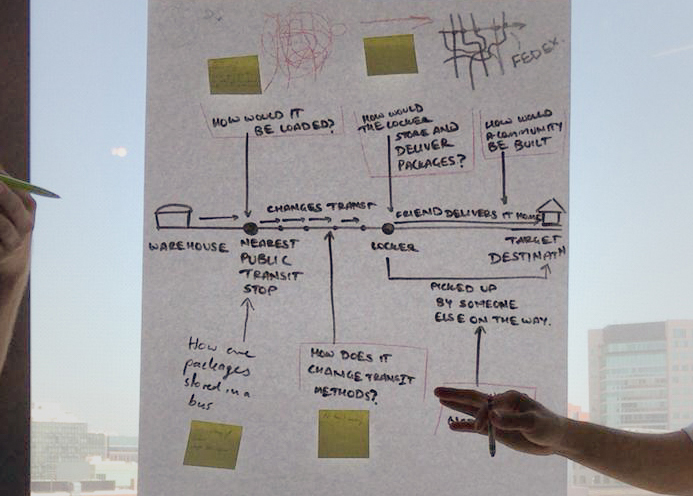
Designing the journey of a package from a warehouse to the recipient
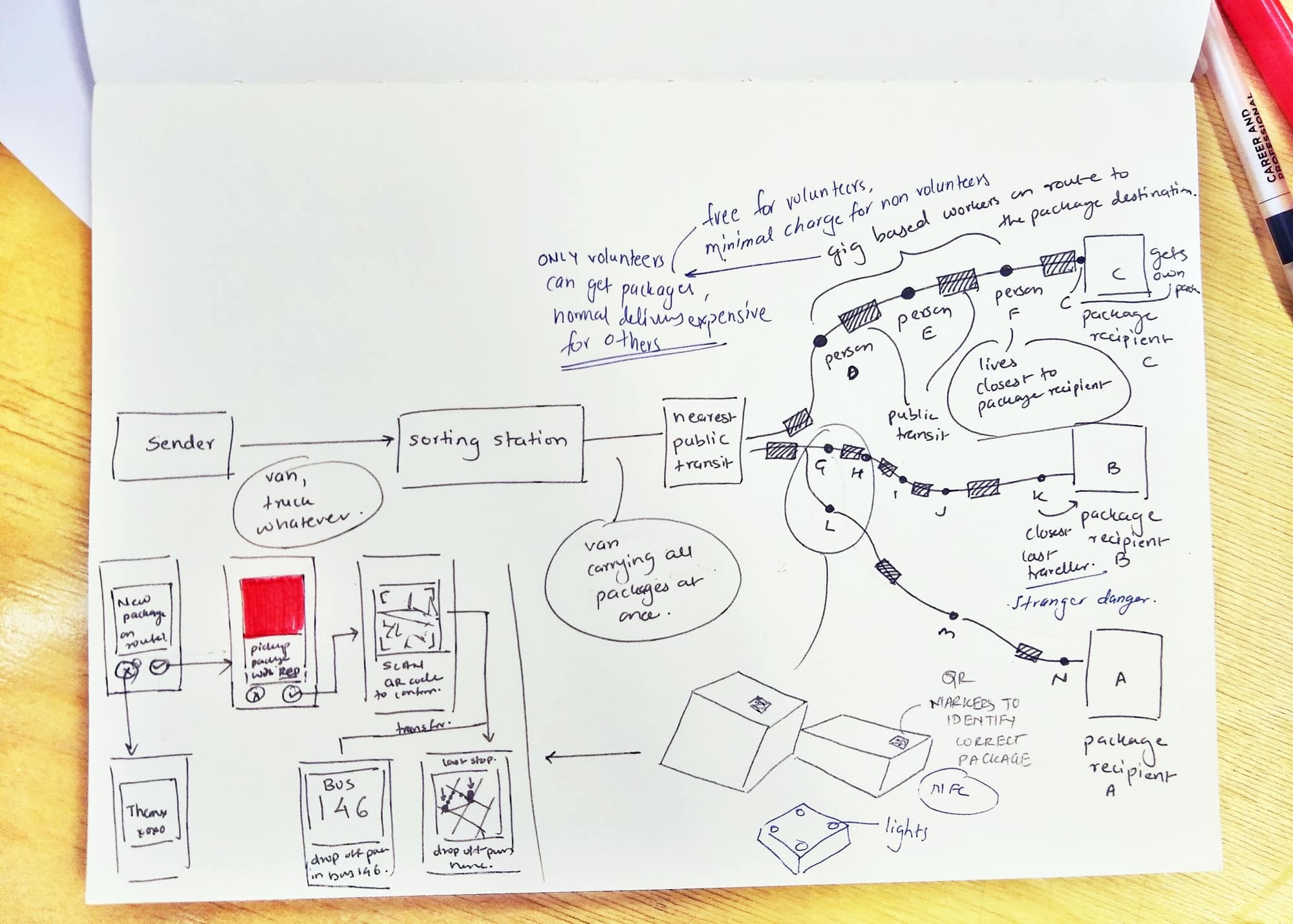
Breaking it all down into further steps

Good samartian powered deliveries
But what new problems did this create?
Security in the gig economy package delivery service would be complicated, with mandatory background
checks and other measures to ensure safety of everyone involved. Additionally, trains and buses
would need to stand still at stops for a lot longer, which would be a disservice to passengers.
How might we reduce the time required for loading and unloading packages?
We realized that taking transfers between multiple modes of transportation out of the equation, and
only leveraging city wide bus networks was the perfect solution. This concept was prototyped through
a stop-motion animation and wireframes of the user facing app.

Package recipients can choose which bus stop and what time they want to pick up their package
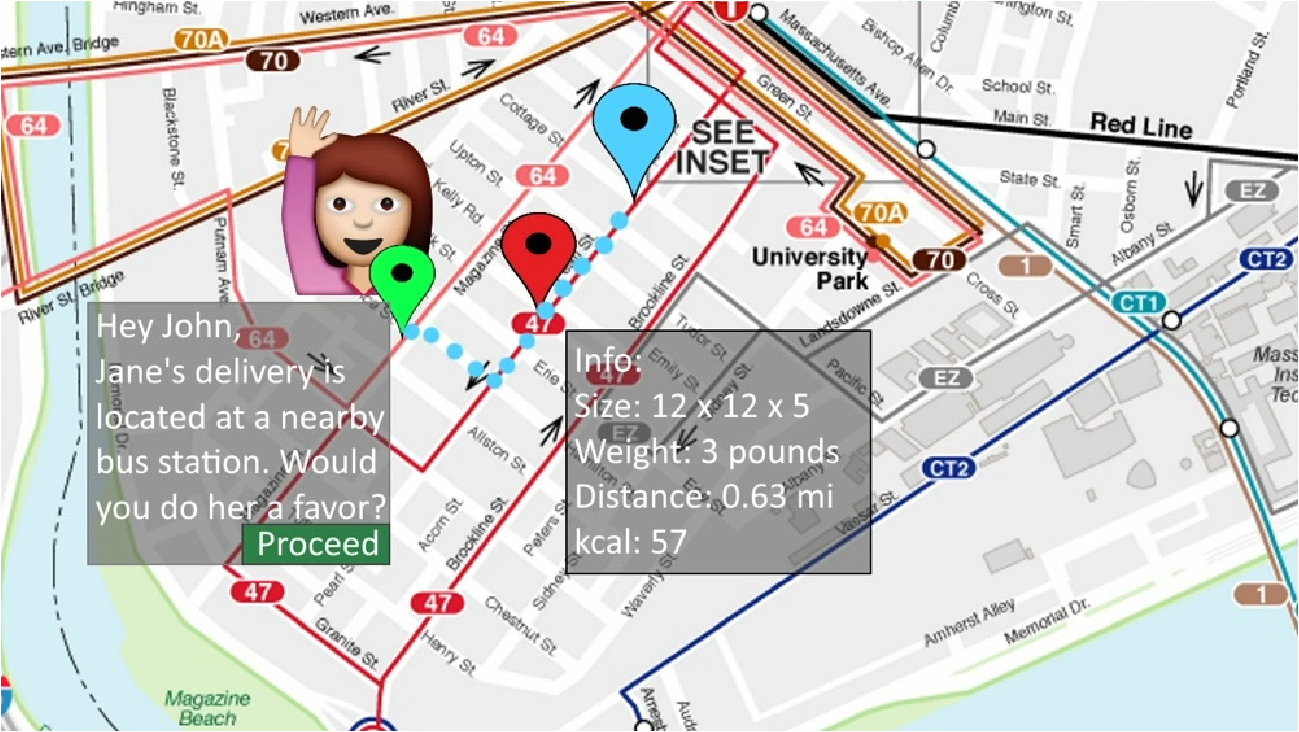
They can also ask a friend or a stranger to pick up the package for them
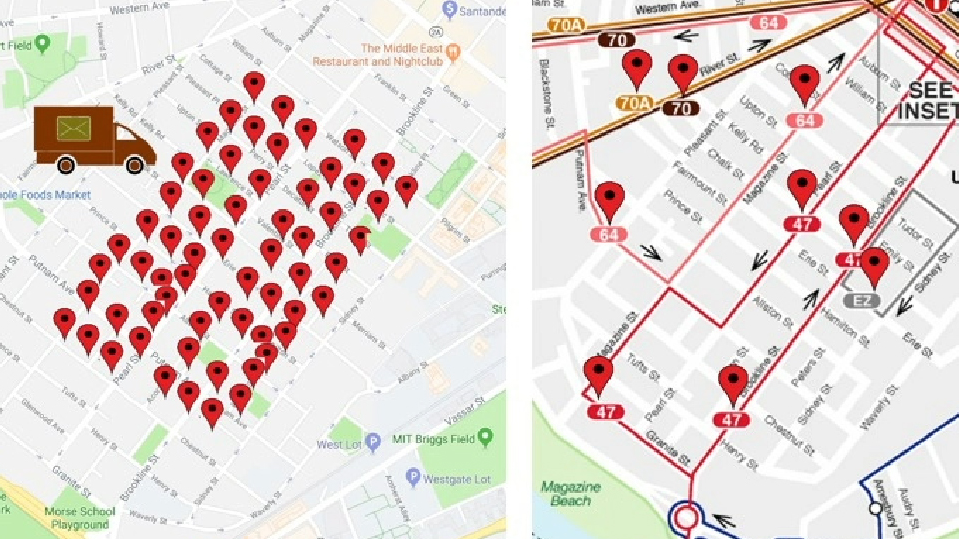
Instead of delivery trucks going all around the city, only one truck drops off all the days packages at the city transit hub just once a day
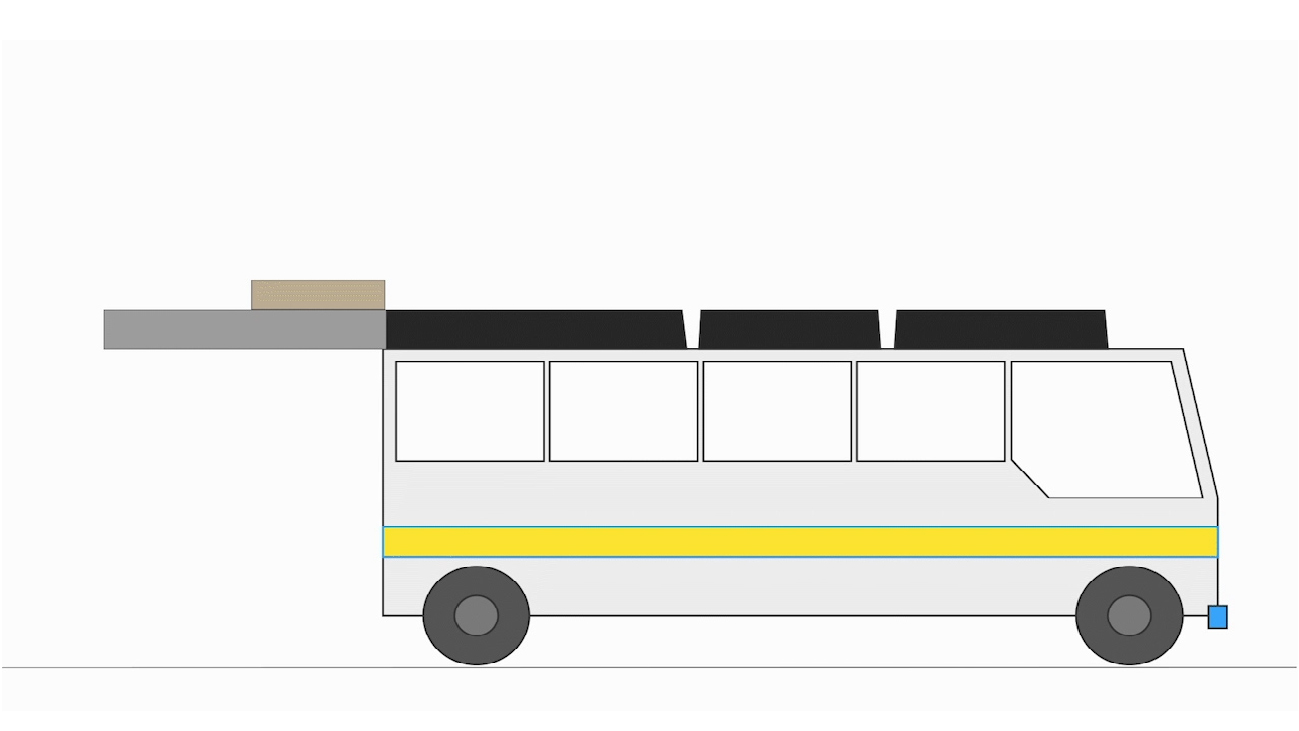
The packages are stored on dedicated lockers on top of every bus depending on the route along which route they are scheduled to be delivered
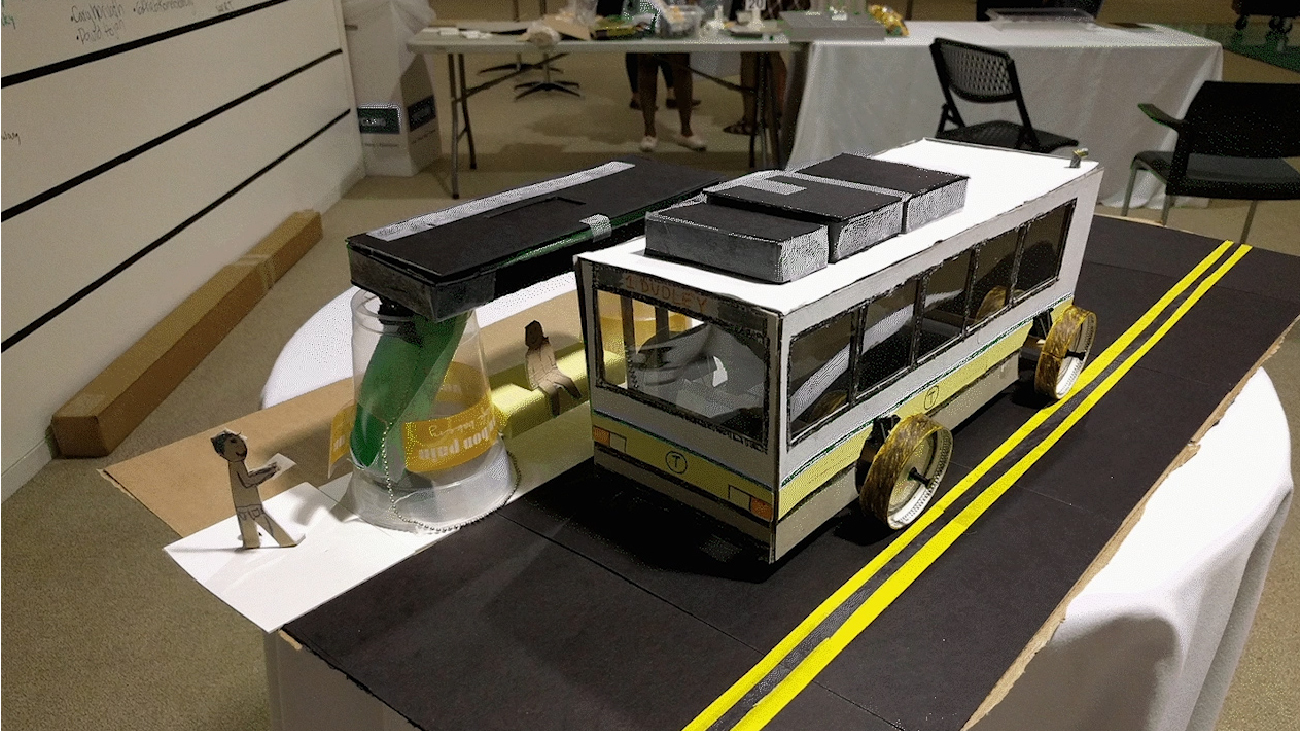
Once the bus reaches a stop where a package is supposed to be dropped off,...

...the packages are unloaded using quick and simple existing solutions such as hydraulic mechanism
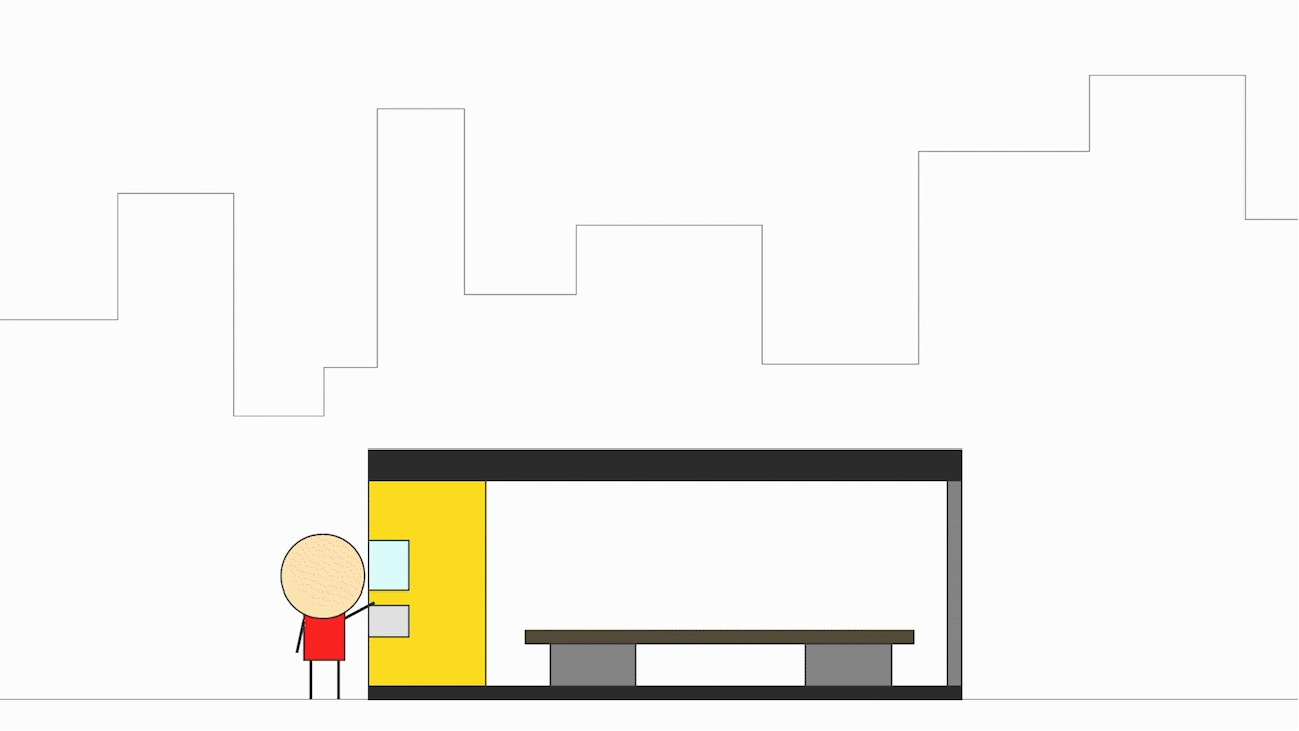
People picking up their package authenticate themselves at a kiosk on the bus stop,...

...after which their package is dispensed,...
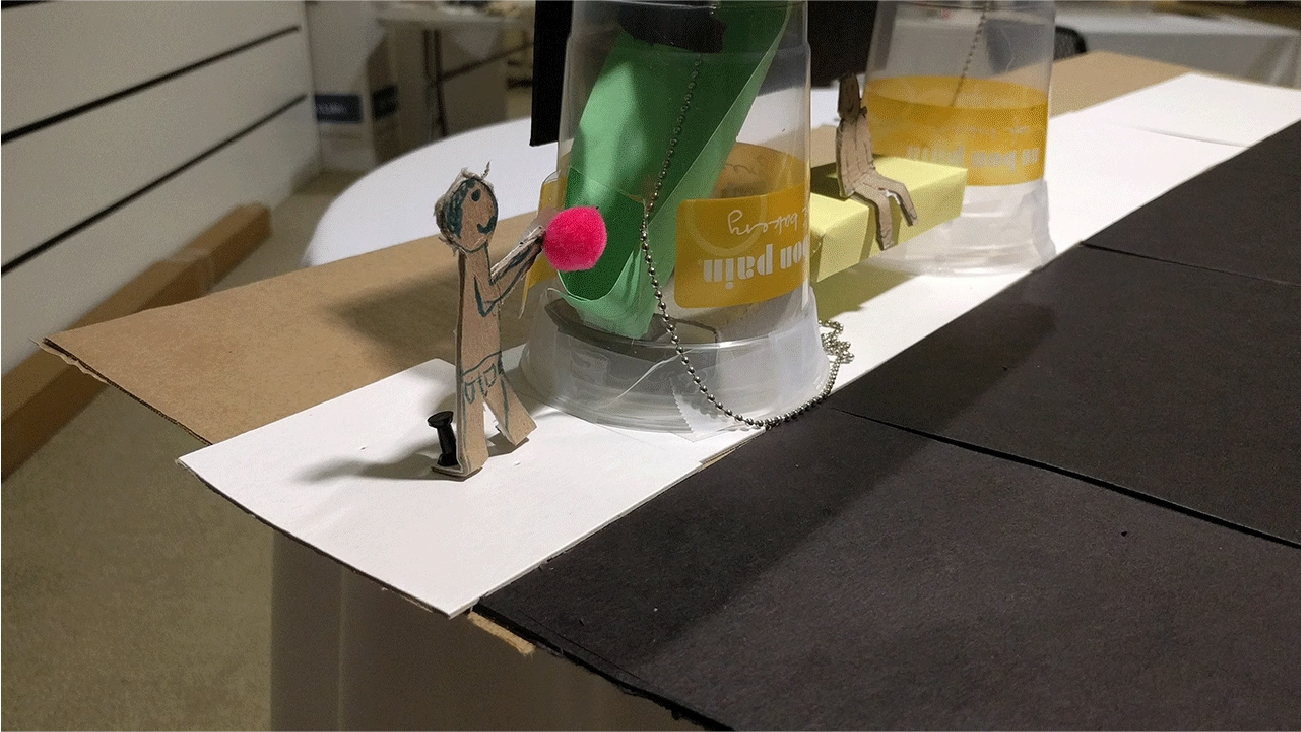
...and they go back happy!
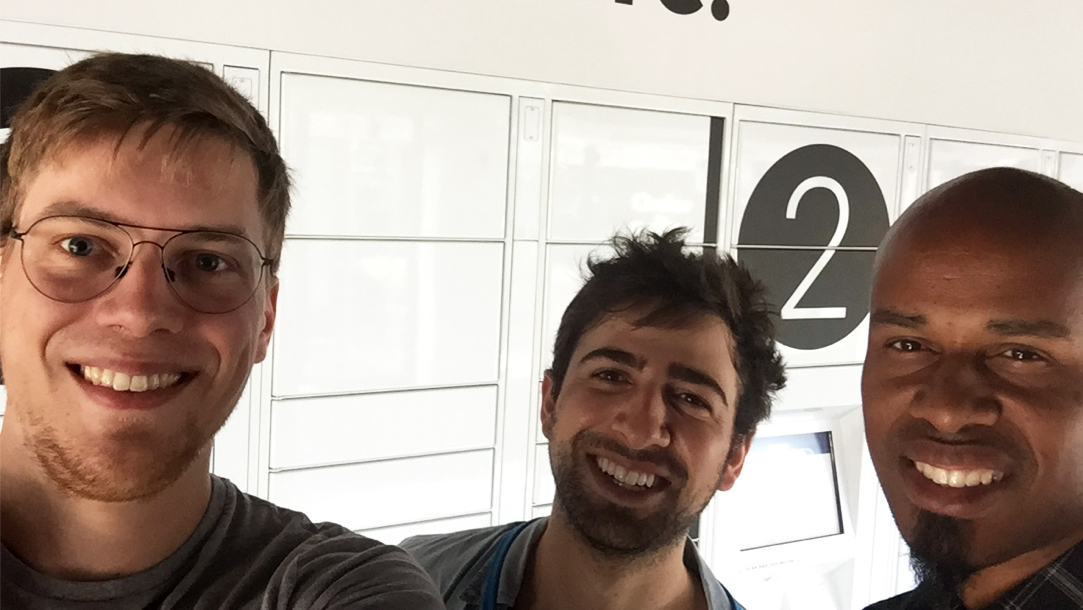
Steffen (L) and Benjamin (C) interviewing the package locker store manager (R)

The nearby package locker facility
We had the opportunity to present our work to Dr. Don Norman and other judges and mentors from MIT Media Lab, UC San Diego, and a few design-led companies.
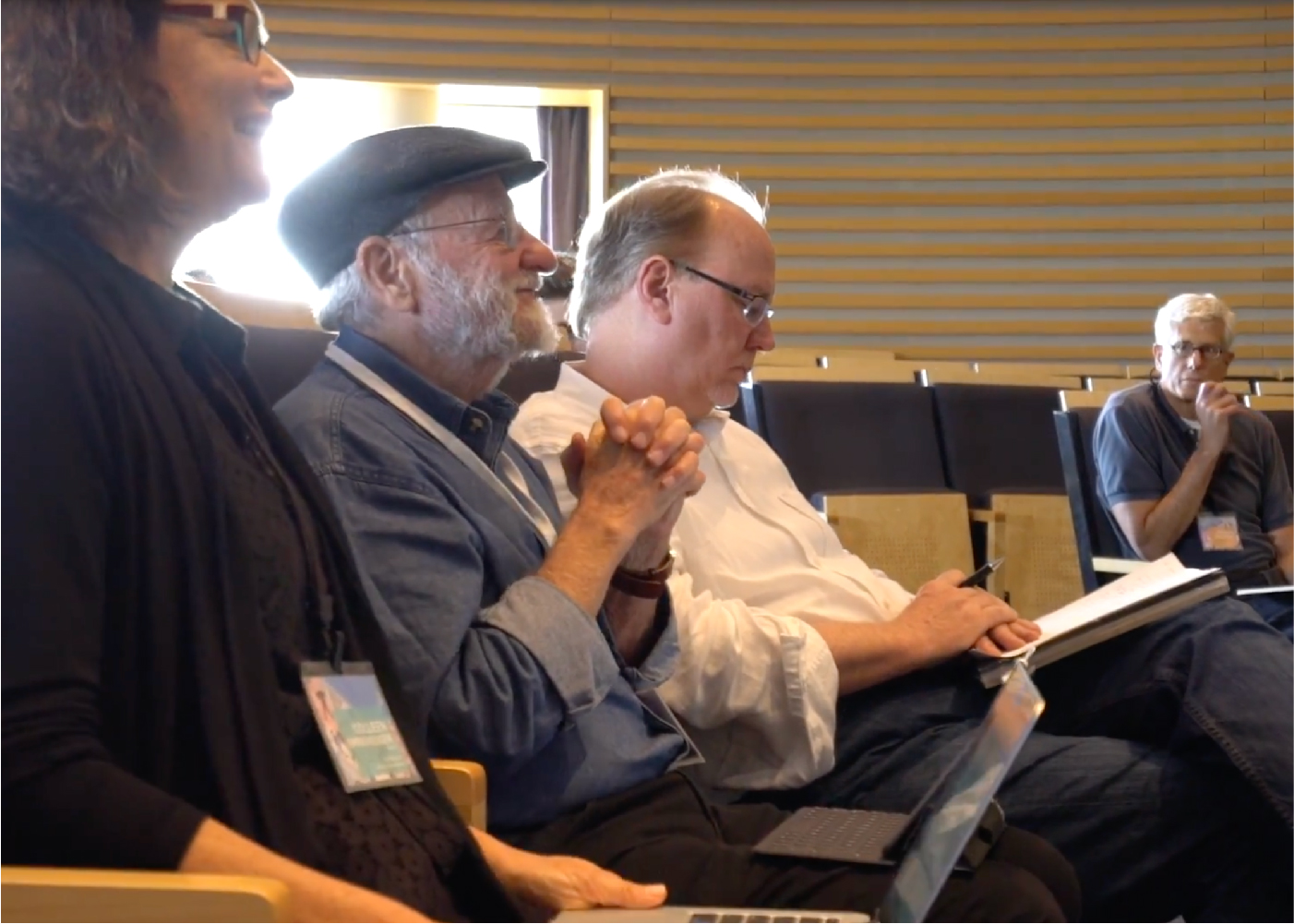
Semi-final presentations judging panel including Dr. Don Norman

Daniel (L), Lennart (C), and I (R), presenting our stop-motion model
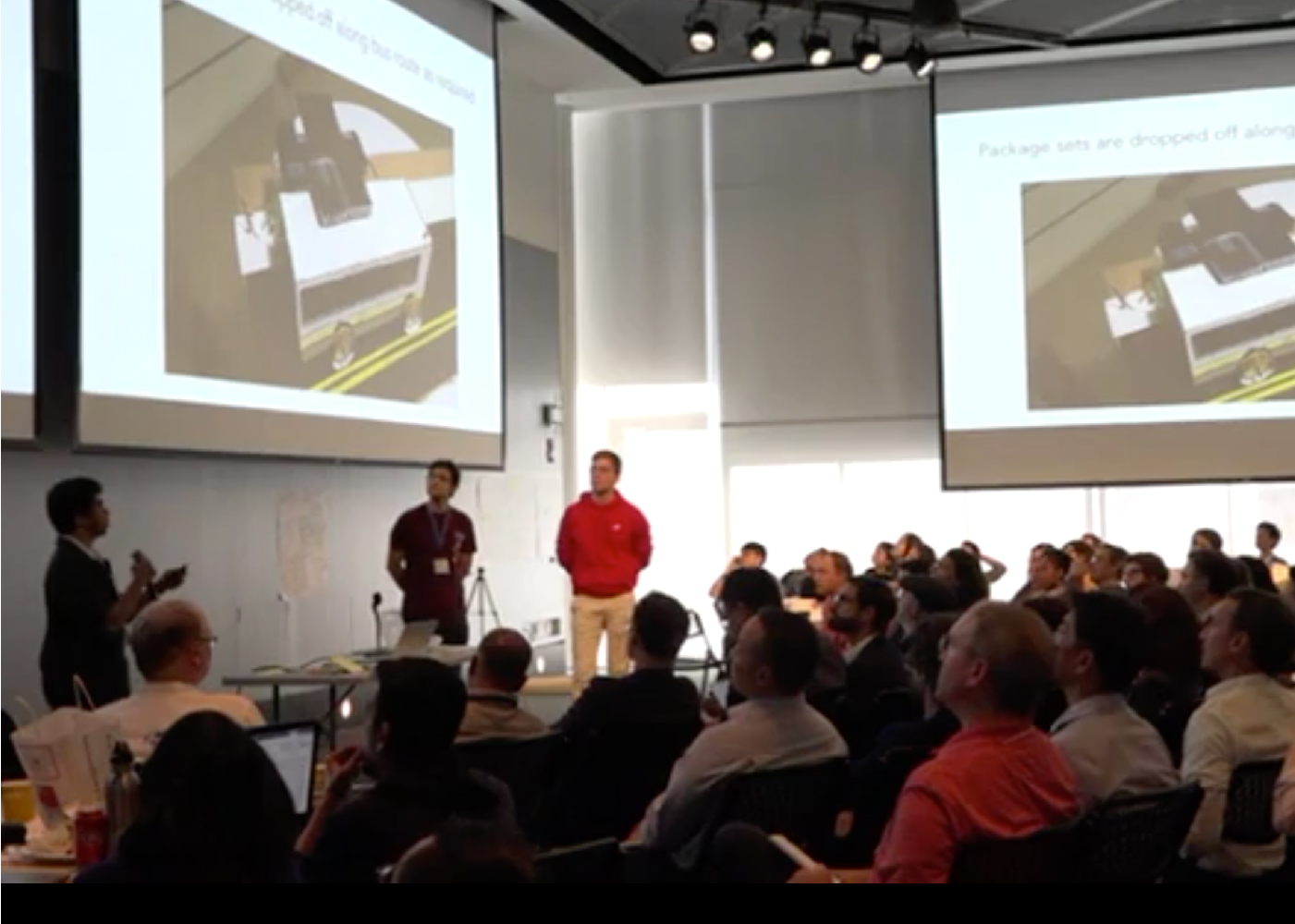
Steffen and I presenting our work at the finals
